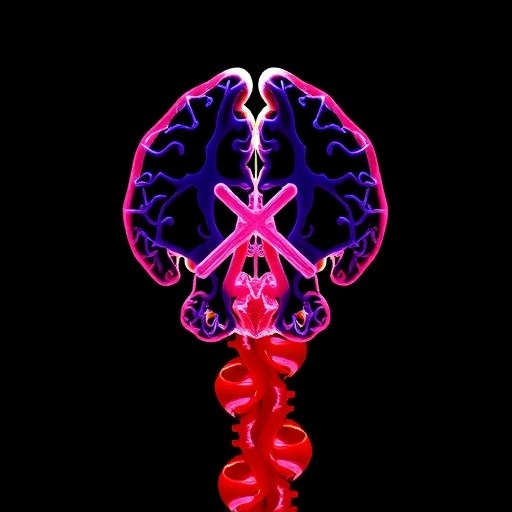The quest for innovative medical solutions that address complex health conditions has led researchers to explore the dynamic field of 3D printing and its applications in medicine. One compelling advancement is the development of a 3D-printed Shape Memory Polymer (SMP) designed for intravascular delivery, specifically targeting endovascular treatments for intracranial aneurysms. A recent study sheds light on the significant potential of this technology, specifically focusing on its capabilities to revolutionize the treatment of cerebral vascular disorders.
Intracranial aneurysms represent a critical health issue, posing a risk of life-threatening conditions like stroke and subarachnoid hemorrhage. Traditional surgical methods can be invasive and carry substantial risks for patients. To counter these challenges, researchers are exploring innovative techniques, employing advanced materials to enhance the effectiveness and safety of endovascular treatments.
The introduction of Shape Memory Polymers in the context of this study has generated considerable excitement. SMPs are unique materials that can be programmed to change shape in response to stimuli, such as temperature or pH, allowing for precise delivery and adaptation within the human body. This transformative property of SMPs is particularly suitable for medical applications where precision and responsiveness are paramount.
3D printing technology further amplifies the advantages of SMPs by facilitating the creation of complex geometries that are difficult to accomplish using traditional manufacturing methods. This study illustrates how custom-designed 3D-printed leached SMPs could be fine-tuned to meet the unique needs of patients suffering from intracranial aneurysms, paving the way for more effective interventions that minimize injury to surrounding tissue.
Researchers in the study meticulously detail the preclinical trials conducted to assess the effectiveness of these SMPs in a simulated environment. The trials involved testing the biocompatibility and mechanical properties of the leached SMPs, ensuring that they adhere to the stringent safety standards required for medical devices. Initial findings indicate that these materials not only exhibit favorable mechanical responses but also demonstrate compatibility with biological tissues, which is crucial for any implantable device.
The study’s authors are keen to emphasize the potential of this 3D-printed SMP as a minimally invasive alternative to conventional surgical interventions. By delivering these polymers directly to the site of the aneurysm, clinicians can reduce the risks associated with open surgery, such as infection and excessive blood loss. This streamlined procedure could lead to shorter recovery times and enhance patient outcomes significantly.
Moreover, the ability to customize the properties of the SMP through 3D printing allows for scalable solutions to treat a diverse range of aneurysm shapes and sizes. As every patient’s anatomy is different, this adaptability is a game changer in the field of neurovascular treatments, as it enables a tailored response that could optimize therapeutic success rates.
The researchers also highlight the importance of multidisciplinary collaboration in this study. It encompasses materials science, engineering, and biomedical practices, fostering innovation that transcends typical disciplinary boundaries. This collaborative spirit is essential for tackling complex medical challenges, demonstrating how diverse expertise ultimately enriches the research output.
While the journey from laboratory to clinical application is extensive, the potential implications of this study are both promising and vast. If successful in clinical trials, this technology could redefine the standard of care for patients confronted with the dangers of intracranial aneurysms. An emphasis on harnessing advanced materials and techniques indicates a promising trajectory towards improved neurosurgical interventions that prioritize patient safety and recovery.
The ongoing research efforts are set against the backdrop of urgent medical needs, as the incidence of intracranial aneurysms is significant in the general population. Developing efficient and less invasive treatment modalities is critical in addressing this public health concern. With continued investment in innovation and research, the prospect of realizing these advanced 3D-printed solutions becomes increasingly attainable.
In wrapping up their findings, the authors express optimism about future studies and the need for rigorous testing in clinical settings. As the scientific community rallies behind these advancements, there is hope that within a few years, 3D-printed leached SMPs may become a staple in endovascular treatment paradigms, ultimately empowering patients to combat the threats posed by intracranial aneurysms.
Scientific inquiry into such materials signifies a step toward a more integrated approach in health care, blending engineering creativity with clinical insight. The implications of successful deployment could extend well beyond the immediate application in aneurysms, affecting a range of conditions where biocompatible and responsive materials can be utilized effectively.
In conclusion, as innovations in technology continue to reshape the landscape of medical treatments, the exploration of 3D-printed leached SMPs demonstrates a significant commitment to improving patient care. With a focus on translating research into meaningful outcomes, the medical field stands on the brink of breakthroughs that hold the potential to save lives and enhance the quality of care for patients worldwide.
Subject of Research: Intravascular Delivery of 3D-printed Leached Shape Memory Polymer for Endovascular Treatment of Intracranial Aneurysm.
Article Title: Towards the Intravascular Delivery of 3D-printed Leached SMP for Endovascular Treatment of Intracranial Aneurysm.
Article References:
Vega, S.R., Mesa, J.C., Blanquer, C. et al. Towards the Intravascular Delivery of 3D-printed Leached SMP for Endovascular Treatment of Intracranial Aneurysm.Ann Biomed Eng (2025). https://doi.org/10.1007/s10439-025-03816-w
Image Credits: AI Generated
DOI: 10.1007/s10439-025-03816-w
Keywords: 3D printing, shape memory polymer, intracranial aneurysm, endovascular treatment, biocompatibility, minimally invasive, neurovascular, medical technology, personalized medicine, materials science, clinical trials, surgical innovation.




